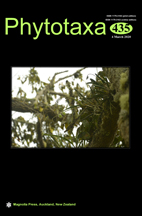Abstract
The new combination Phyllopentas schimperi (Hochstetter) Y.D. Zhou & Q.F. Wang is here proposed to replace the two illegitimate combinations Phyllopentas schimperiana (Vatke) Kårehed & B. Bremer and Phyllopentas schimperiana (A. Richard) Kårehed & B. Bremer of this species, which is found in Tropical Africa, and was formerly positioned in Pentas.

